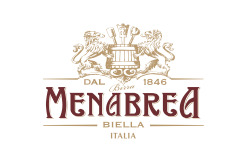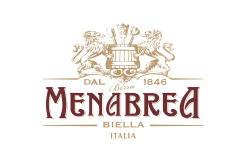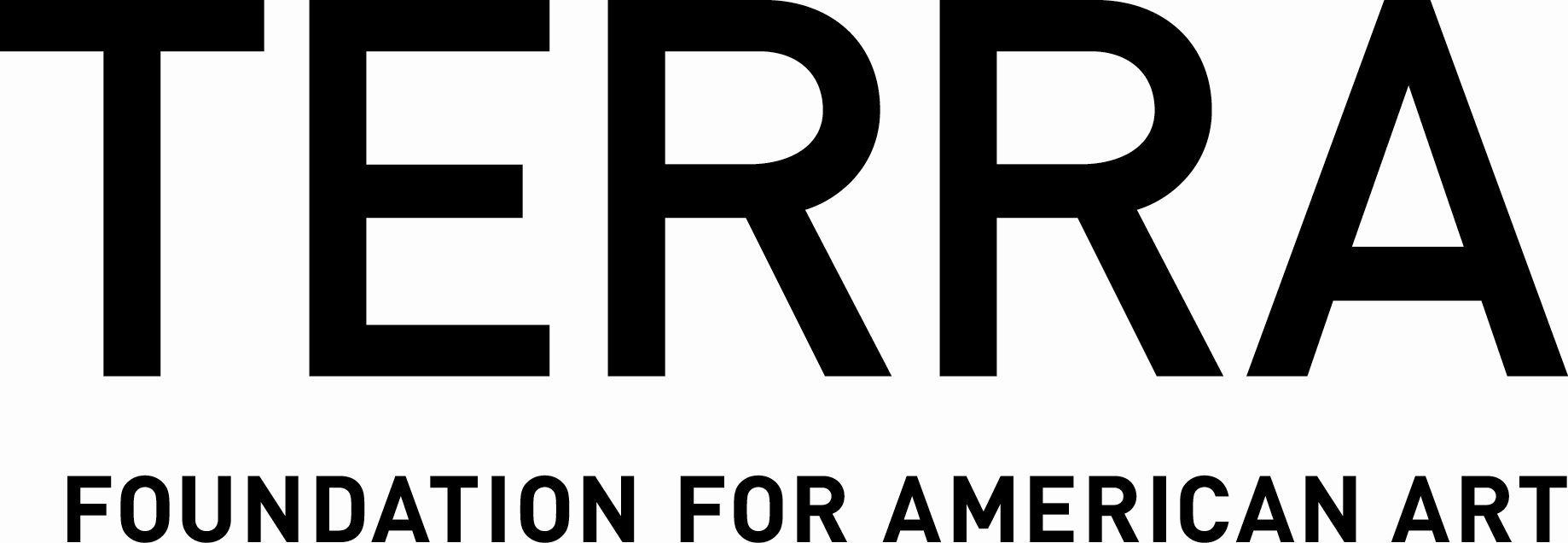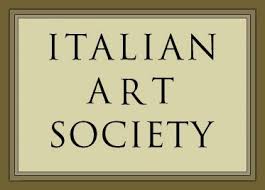SLOW ART DAY
April 05, 2019
On Saturday, April 6, CIMA will proudly participate for the fifth consecutive year in Slow Art Day! This wonderful initiative was launched in 2008 by the CEO Phil Terry, who, after spending an hour one afternoon observing Hans Hoffman’s Fantasia (1943), developed a new appreciation for closely observing art that he hoped to share with others. Now a global event, its mission is simple: “help more people discover for themselves the joy of looking at and loving art.”
The principle of slow art professes that when all people, regardless of their prior knowledge or expertise, “look slowly at a piece of art they make discoveries” that have the potential to foster profound “passion and creativity.” The slow art approach having been central to our ethos from the start, CIMA always encourages visitors to carry out this active process of observation; however, on Slow Art Day, it will be celebrated.
So on Saturday, April 6, we invite you to slowly experience our current exhibition, Metaphysical Masterpieces 1916–1920: Morandi, Sironi, and Carrà. Visit CIMA during regular open hours (from 1pm to 6pm), challenge yourself to spend 10 minutes in front of one or two of the paintings that most inspire you, and share your distinct insights with us, your friends, or other viewers. You may also join us at 11am or 2pm for espresso and a guided visit of the show – our “slow art”-looking tour led by our fellows in residence.
BOOK YOUR VISIT NOW!

MEMBERS ONLY – CURATOR-LED TOUR OF “LUCIO FONTANA: ON THE THRESHOLD”
April 02, 2019
“In our current climate of huge retrospectives . . . On the Threshold is a necessary – and for those who look closely, rewarding – addendum.” —Wall Street Journal
CIMA Members are invited to join us for a private tour of the exhibition Lucio Fontana: On the Threshold at The Met Breuer. Our tour will be led by Iria Candela, the Estrellita B. Brodsky Curator of Latin American Art in The Met’s Department of Modern and Contemporary Art who has curated the show with the assistance of Aimé Iglesias Lukin, a Research Associate of the Department of Modern and Contemporary Art.
This exhibition reexamines the career of one of the most innovative artists of the twentieth century. The show explores the artistic career of the Argentine-Italian artist Lucio Fontana, widely known for his Cuts series, slashed paintings that became symbols of the postwar era. However, the exhibition explores also the artist’s beginning as a sculptor and, alongside the paintings, sculptures, and drawings on view, the Met will also reconstruct three of Fontana’s late, immersive environments, providing a rare perspective on his pursuit of a spatial and technological art.
Please note: CIMA members will receive an email invitation in our newsletter, via Mailchimp to RSVP for this event. Due to the special nature of this private tour with one of the exhibit’s curators, the event is limited to 20 members only!
The exhibition will be closing on April 14, so seize the chance to experience the show before it is over!
If you are feeling generous and you are able, please consider making a donation in person or here. As a public non-profit organization, CIMA works fervently to make such exclusive and exceptional events available to our members. Any amount will facilitate our ability to continue to offer our members access to one-of-a-kind private events at the premier art institutions across New York City!
Not a CIMA member…? BECOME A MEMBER TODAY!
Members receive free admission to CIMA, access outside of regular public hours, a copy of the annual catalogue, and invitations to exclusive events and receptions.

Literary Metaphysics: Massimo Bontempelli and the Foundations of Magical Realism
March 26, 2019
Is there a literary counterpart to what art historians call the ‘Scuola Metafisica’? Giorgio de Chirico himself wrote disquieting poems, dreamlike prose, and even an experimental novel, while his brother Alberto Savinio became one of Italy’s most celebrated modernist authors and was included in André Breton’s foundational anthology of black humor. Another painter, Filippo de Pisis, claimed to have invented ‘Metaphysical narrative’ in Ferrara, and the early work of vanguardists, such as Palazzeschi, Delfini, and Govoni, has often been associated with Metaphysical art. All these experiences contributed to what critics, in textbooks and literary histories, have often called ‘Italian Surrealism.’ While challenging such a Franco-centric and imprecise formula, this lecture focuses on the most original and influential poetics that emerged from the impact of Metaphysical painting on Italy’s literary imagination: the style known as Realismo Magico, or Magismo.
Magic(al) Realism is an extremely broad category in current critical terminology, but few know that one of its earliest uses (arguably the first in the realm of literature) was proposed by writer Massimo Bontempelli to re-found Italian literature in the inter-war period. Bontempelli was deeply influenced by his meeting and collaboration with the de Chirico brothers, and forged a poetics of ‘everyday marvel’ that, after unsuccessful attempts at Neoclassical and post-Futurist literature, made him one of the most popular writers in Europe. Because of his relations with the fascist regime, Bontempelli’s magical writings and aesthetic theories have been largely forgotten in the second half of the twentieth century, but they still deeply influenced crucial voices of post-war literature, including that of Italo Calvino. This lecture will center on the two Favole metafisiche of the 1920s that are most clearly connected with the Metaphysical Masterpieces currently exhibited at CIMA. It will also argue that the Scuola Metafisica and Realismo Magico share some crucial literary and visual sources, including Ovid’s mythology, 15th century Italian painting, and Ludovico Ariosto’s irony.
Join us for an evening with Alessandro Giammei (Bryn Mawr College) and CIMA’s Spring Fellow Carlotta Castellani, who will discuss the magazine “Industrie Italiane Industriali” (“Italian Factories Illustrated”) as a Modernist Platform where both writers – such as Massimo Bontempelli – and artists – such as Mario Sironi and Carlo Carrà – worked and shared their new aesthetic ideas.
RESERVE A SEAT!
Program schedule:
6pm – registration, aperitivo, and viewing of Metaphysical Masterpieces
6:15pm – program begins, followed by audience Q&A
8pm – Evening concludes
Alessandro Giammei is an Assistant Professor of Italian Studies at Bryn Mawr College, where he is also affiliated with Africana Studies. He completed his Laurea degree at the University of Rome La Sapienza and got his PhD from the Scuola Normale Superiore. He taught at NYU as a visiting scholar and as a Cotsen Fellow in the Society of Fellows at Princeton University, where he additionally held leadership roles in the Program in Italian Studies and the Prison Teaching Initiative. His published articles and essays address trans-historical topics at the crossway of textual and visual studies, Italy’s modernism and the Renaissance. He is completing a book on Ludovico Ariosto’s legacy in the visual and literary culture of the machine age, from de Chirico’s painting to fascist folklore in Ferrara. His first book, Nell’officina del nonsense di Toti Scialoja (il verri, 2014), won the Harvard edition of the Edinburgh Gadda Prize in 2015. He recently published a collection of personal essays titled Una serie ininterrotta di gesti riusciti (Marsilio, 2018). www.giammei.com
Refreshments have been generously donated by:

MEMBERS ONLY: TOUR OF HILMA AF KLINT: PAINTINGS FOR THE FUTURE AT THE GUGGENHEIM WITH CURATORIAL ASSISTANT DAVID HOROWITZ
March 19, 2019
“These paintings are a revelation, and like nothing that came before them” (The Economist)
CIMA is thrilled to invite its members this March to a private tour of the Guggenheim’s landmark exhibit Hilma af Klint: Paintings for the Future. We are fortunate to have the exhibit’s curatorial assistant David Horowitz leading the tour of what the New York Times has called a “staggering exhibition.” Although overlooked in her own time, af Klint’s experimentation in the first decade of the twentieth century has since been classified by art historians as the first true abstract art of the modernist period. Predating Kandinsky, Malevich and Mondrian’s modernist abstractions by nearly a decade, af Klint’s innovation and spiritual approach to painting was truly avant-garde in the sense of ‘before its time.’ Please join us for a private tour of her first major exhibition in the United States since 1986.
Please note: CIMA members will receive an email invitation in our newsletter, via Mailchimp to RSVP for this event. Due to the special nature of this private tour with one of the exhibit’s curators, the event is limited to 12 members only!
If you are feeling generous and you are able, please consider making a donation in person or here. As a public non-profit organization, CIMA works fervently to make such exclusive and exceptional events available to our members. Most of our members-only tours are free, but for this special and extravagant event, your financial support would be most welcome. Any amount will facilitate our ability to continue to offer our members access to one-of-a-kind private events at the premier art institutions across New York City.
Members receive free admission to CIMA, access outside of regular public hours, a copy of the annual catalogue, and invitations to exclusive events and receptions.
Photo Credit: Installation view of Hilma af Klint: Paintings for the Future, 2018. Photo: Scott Rudd © SRGF, NY.

Sironi cupo: a lecture by Emily Braun
March 13, 2019
CIMA hosts Distinguished Professor Emily Braun for a special talk on Mario Sironi. She will address the themes of Sironi’s works on view in the current CIMA exhibition and in the context of the immediate postwar milieu in Italy (1918–1924), before the Fascist consolidation of power. The meaning of “cupo” (dark/ deep/ gloomy) a word often applied to Sironi’s style and person, will be used, instead, to interrogate the artist’s prolific representation of mannequins, mechanized protagonists, and automata in these years. Profoundly different from, if indebted to, the iconography of de Chirico’s metaphysical art, Sironi’s rendition of the dehumanized figure represents a wholesale break with past narrative traditions and anything but a “return to order.”
Emily Braun (Distinguished Professor, Hunter College and the Graduate Center, CUNY) is the author of Mario Sironi and Italian Modernism: Art and Politics under Fascism (Cambridge University Press 2000; Italian edition Bollati Boringhieri) and has published extensively on 20th century Italian art. In 2016 she organized Alberto Burri: The Trauma of Painting for the Solomon R. Guggenheim Museum, which was honored with the 2016 Dedalus Foundation Exhibition Catalogue Award. Most recently she has contributed essays to the catalogues of the Grant Wood retrospective at the Whitney Museum of American Art and the Lucio Fontana exhibition currently at the MET Breuer. She has been the recipient of Fellowships from the Getty Foundation and the New York Public Library Center for Scholars and Writers. Since 1987, Braun has curated the Leonard A. Lauder Cubist Collection and, in 2014, coauthored its catalogue for the Metropolitan Museum Art, which received the AAMC Award for Excellence.
Free for students and CIMA members.
RESERVE A SEAT!
Program schedule:
6pm – Registration, aperitivo, and viewing of Metaphysical Masterpieces
6:15pm – Program begins, followed by audience Q&A
8pm – Evening concludes
Refreshments have been generously donated by:

MEMBERS ONLY: CURATOR-LED TOUR OF “ANDY WARHOL – FROM A TO B AND BACK AGAIN”
March 05, 2019
CIMA Members are invited to join us for a private tour of Andy Warhol – From A to B and Back Again at the Whitney Museum of American Art. The tour will be led by the curator of the exhibition Donna De Salvo (Deputy Director for International Initiatives and Senior Curator) and Neil Printz (Editor of The Andy Warhol Catalogue Raisonné).
One of the most influential American artists, Andy Warhol (1928–1987) launched his career as a commercial illustrator and gradually established his fame in the art world. Experimenting with unconventional materials and creative artistic techniques, Warhol recognized the power of images and utilized it to make a difference in contemporary art and life. The exhibition at Whitney Museum presents a retrospective on Warhol’s artworks since 1950s and introduces to the public Warhol’s life and art from a novel and modern perspective.
The exhibition will be closing on March 31, so seize the chance to experience the show before it is over!
Please note: CIMA Members will receive a private invitation link to RSVP for this event. Limited to 20 members only!
Members receive free admission to CIMA, access outside of regular public hours, a copy of the annual catalogue, and invitations to exclusive events and receptions.
PHOTO: Installation view of Andy Warhol – From A to B and Back Again (Whitney Museum of American Art, New York, November 12, 2018-March 31, 2019). Photograph by Ron Amstutz. © 2018 The Andy Warhol Foundation for the Visual Arts, Inc. / Licensed by Artists Rights Society (ARS), New York

METAPHYSICAL YEARS LECTURE SERIES: ARA H. MERJIAN ON 1919
February 28, 2019
Metaphysical Years Lecture Series
Year 4: Ara H. Merjian on 1919
This lecture series offers an overview of the birth and development of pittura metafisica (metaphysical art) against the backdrop of World War I as well as in the context of the post-war years in Italy. The presentations explore significant literary trends of the time along with socio-cultural events of the short yet crucially important period covered by CIMA’s 2018-19 exhibition, Metaphysical Masterpieces 1916-1920: Morandi, Sironi, and Carrà.
Fresh off its victory as a newly minted Allied power, Italy appeared, by 1919, to have consolidated a still fitful national identity. Leaving behind the volatility of the Giolitti period, the still young country seemed poised to enter twentieth-century modernity with fresh confidence. Yet a spate of strikes and factory occupations – spurred on by revolutions in Russia and Germany – threw the political and social order into chaos, matched by an equally aggressive activism rising from the right. The violence and uncertainty of the “Red Biennium” of 1919–1921 saw a newly radicalized left square off against an emergent Fascist movement, galvanized by equal parts social agitation and virulent nationalism. Published in Milan in March, the platform of the ‘Fasci di Combattimento’ – followed by Gabriele D’Annunzio’s paramilitary occupation of the port city of Fiume later this same year – fatefully shifted the tenor of political discourse in Italy.
These new developments were significantly influenced by the example of F.T. Marinetti’s Futurist movement, which had long agitated for both war and an irredentist foreign policy. The rise – and eventual triumph – of Mussolini’s Fascist party drew extensively on Futurism’s rhetorical arsenal of virility, nationalism, and élan vitale, promising a slate wiped free of Italy’s weighty cultural patrimony. Yet the burgeoning Fascist revolution came to appeal in equal measure to a sense of order and rectitude – ideological values which echoed the “plastic values” pursued by various artists in the wake of World War One. Setting aside avant-garde fragmentation and violence, the period’s “return to order” witnessed a renewed visual investment in notions of stability, clarity, and architectural solidity, nourished upon the Mediterranean past. This lecture will examine some of these competing strains as they intersected in Italian politics and culture in 1919, as well as with a wider European moment: a moment riven by revolution and reaction, innovation and atavism, ruptures and returns.
Ara H. Merjian is Associate Professor of Italian Studies at New York University, where he is an affiliate of the Institute of Fine Arts and the Department of Art History. He was educated at Yale University and the University of California, Berkeley, where he studied under the direction of T.J. Clark. He was a Fulbright scholar to Italy, and before joining the faculty at NYU he taught at Stanford and Harvard. He is the author of Giorgio de Chirico and the Metaphysical City: Nietzsche, Paris, Modernism (Yale University Press, 2014), which won a CAA/Millard Meiss Author’s Award, and Against the Avant-Garde: Pier Paolo Pasolini, Contemporary Art and Neocapitalism, 1960-1975 (University of Chicago Press, 2019), for which he received a Creative Capital/Andy Warhol Foundation Art Writers Grant. His book Blueprints and Ruins: The Architectonic Afterlifes of Giorgio de Chirico will be published with Yale University Press in 2022, and he currently is at work on two new manuscripts: The Mimesis of the Gaze: Shared Vision and Intersubjectivity in Modernist Painting, and A Future by Design: Modernity, Totality, and the Italian Avant-Garde. He is a contributor to frieze, Art in America, and Artforum.
FREE for CIMA members and students. Registration required.
MISSED THE TALK? STREAM IT HERE
Please note: CIMA will be live-streaming the program on our Facebook page.
Program schedule:
6pm – registration, aperitivo, and viewing of Metaphysical Masterpieces
6:15pm – program begins, followed by audience Q&A
8pm – evening concludes

CIMA TURNS FIVE!
February 20, 2019
On Wednesday, February 20, CIMA will be celebrating its fifth birthday! In honor of the occasion, we will offer special Open Hours (from 11:00 AM to 4:00 PM) during which visitors can enjoy our current exhibition on the Metaphysical Masterpieces of Giorgio Morandi, Mario Sironi, and Carlo Carrà.
Since its inception, CIMA has successfully advanced the study and appreciation of modern and contemporary Italian art on an international scale and served as an incubator of ideas for other arts institutions. Our inaugural exhibition centering the Futurist Fortunato Depero was launched on February 21, 2014 in conjunction with a series of lectures devoted to the artist and his legacy. Manifesting as our first ever Study Day, this event inspired an exhibition on Depero organized in Madrid the following year.
Following this fruitful debut, CIMA has organized an impressive array of exhibitions, along with Study Days on topics including Fabio Mauri, Medardo Rosso, Alfred and Margaret Scolari Barr, Postwar Italian Art, Giorgio Morandi, Giorgio de Chirico and Giulio Paolini, Postmodernism in Italian Art, Léonce Rosenberg and Alberto Savinio. In an effort to carry on this tradition, we will host our next Study Day, featuring presentations on MoMA’s 1949 exhibition Twentieth-century Italian Art, on Tuesday, February 12.
Beyond offering enriching programming, CIMA consistently promotes the research of young scholars of modern and contemporary Italian art. Thanks to our collaboration with the CUNY Graduate Center and the Scuola Normale Superiore of Pisa, we have supported 28 talented research fellows to date both at CIMA’s New York location and in Italy, many of whom have gone on to pursue other prestigious fellowships or hold positions as professors and curators at a plethora of esteemed universities and museums.
Join us on February 20 as we celebrate these five years of accomplishments and the launch of our online journal Italian Modern Art, and support future programs and scholarship by making a donation!
BOOK YOUR ANNIVERSARY VISIT NOW!

Methodologies of Exchange: MoMA’s Twentieth-century Italian Art (1949)
February 12, 2019
The conference uses the 1949 Museum of Modern Art exhibition Twentieth-century Italian Art as a case study to examine the various methodologies or approaches taken in recent years to explore the artistic exchange between the United States and Italy in the twentieth century. By examining the history of this exhibition and the traveling exhibitions that it spawned, we will explore the reception of Italian art and artists in the US, the growth of networks and collaborations between US dealers and artists, and the role that Italy played in the idea of art-making among American postwar artists. This particular subject allows for other questions as well: How did an important institution like MoMA shape the narrative of American modernism? How did Italy help Alfred Barr and MoMA rethink a Franco-centric vision of modern art after the war? How did the American art world deal with the problematic legacy of Fascist Modernism?
Organized and chaired by former CIMA fellow Raffaele Bedarida, former Terra Foundation fellow Davide Colombo, and scholar Silvia Bignami, with this program CIMA devotes a day to engendering a deeper understanding of the 1949 exhibition’s influence; namely, its role in exposing the American public, artists, and art dealers to the works of Italian modernists. Twentieth-century Italian Art acted as a catalyst for a vital exchange that had lasting effects on the American art scene. It also marked an essential turning point in the writing of the history of modern art, from both an American and an Italian viewpoint. By focusing on artists, art dealers, critics, and collectors involved in the MoMA show from both side of the Atlantic or directly affected by its consequences, the Study Day will explore a multiplicity of stories. Simultaneously it will solicit dialogue and collaboration among a wide range of methodologies that are necessary for the study of art exchange across national boundaries.
This Study Day will be held at CIMA in connection with the 107th meeting of the College Art Association and the 70th anniversary of the MoMA exhibition.
Program schedule:
10.30am
Metaphysical Masterpieces exhibition viewing and registration
11.am
Welcome by Emma Lewis, Executive Director of CIMA
Introduction by *Raffaele Bedarida
11.15 am–12.45pm
Morning Panel: Italian Projections
Laura Moure Cecchini – “Positively the only person to be interested in the show”: Romeo Toninelli collector and diplomat between Milan and New York
Adrian Duran – Neo-Cubism and Italian Painting ca. 1949: More Than Meets the Eye
Renato Camurri – A Transatlantic Intellectual Space: Italy and United States (1922–1950)
Sergio Cortesini – The Italian Novecento in America before 1949
Respondent: Emily Braun
1 – 2.30pm
lunch break
2.30 – 4.45pm
Afternoon Panel: American Responses
Will Norman – Saul Steinberg and the Unstable US Cultural Field of the Late Forties
*Davide Colombo / *Silvia Bignami – Two Americans in Italy: Alfred H. Barr, Jr. and James T. Soby at Venice Biennale and Rome Quadriennale
Sharon Hecker – A Friendly Competition: Collecting Postwar Italian Art in the Midwest
Ilaria Schiaffini – It’s Roman Holiday for Artists: The American Artists of L’Obelisco
Respondent: Melissa Dabakis
5pm
Q&A – Concluding Roundtable with All Speakers moderated by *Davide Colombo and *Raffaele Bedarida
*denotes conference organizers
MISSED THE CONFERENCE? STREAM IT HERE:
PT. 1
PT. 2
Read abstracts and bios of the speakers.
Image caption: Unidentified visitors at the exhibition, “Twentieth Century Italian Art.” June 28, 1949–September 18, 1949. Photographic Archive. The Museum of Modern Art Archives, New York. IN413.36F. Photograph by Homer Page.

MEMBERS ONLY: TOUR OF POSING MODERNITY AT THE WALLACH ART GALLERY
February 06, 2019
CIMA Members are invited to join us for a private visit of Columbia University’s Wallach Art Gallery, where we will be led on a tour of the current exhibition entitled Posing Modernity: The Black Model from Manet and Matisse to Today. The exhibition was organized in partnership with the Musée d’Orsay, where an expanded version of the show will be opening from March 26 to July 14, 2019.
Don’t miss out on this lovely opportunity to view the exhibition before it closes on February 10! We look forward to seeing you there.
The works organized for the New York exhibition seek to examine how changing modes of representation of the black figure has been a central development within modern art. The Wallach Art Gallery’s exhibition deals primarily with questions regarding the black female figure, beginning with Edouard Manet’s portrayals of Laure, the model who posed as the maid in Olympia, in the 1860s. The exhibition also explores productions of other impressionists who worked contemporaneously alongside Manet, including Frédéric Bazille, Edgar Degas and the photographer Nadar; sculptors Charles Henri Joseph Cordier and Jean-Baptiste Carpeaux; as well as the paintings, drawings and prints of Henri Matisse. Also brought into discussion is the portraiture of renowned Harlem Renaissance artists, including William H. Johnson and Charles Alston. Finally examined is how the legacy of these pioneers of modern art has effected post-war modern and contemporary production up to the current day.
The Columbia University Wallach Art Gallery is located in the Lenfest Center for the Arts, 615 West 129th Street (enter on West 125th Street, just west of Broadway).
Please note: CIMA Members will receive a private invitation link to RSVP for this event. Limited to 20 members only!
Members receive free admission to CIMA, access outside of regular public hours, a copy of the annual catalogue, and invitations to exclusive events and receptions.







